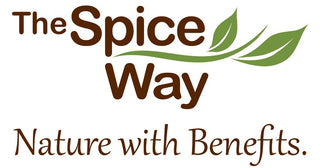The Truth About Zaatar
What is zaatar?
Zaatar is a spice blend that originated in the Middle East and it always includes Hyssop, Sumac, Sesame Seeds and Salt. Hyssop is a wild herb from the thyme family that was only cultivated in 50 years ago.
The Hyssop is such an important and vital part of the zaatar blend, that in the Middle East, it is referred to as the zaatar herb, thus the confusion you sometime encounter, where people think zaatar is an herb and not a blend.
Zaatar has many health benefits associated with it and unique flavor, and that is why people from all over the world tried to imitate the blend using herbs they could find and that is why there are so many versions out there using regular thyme and oregano. These may be valid attempts, but the result isn't real zaatar, but pale versions.
Hyssop - a vital part of any real zaatar
The health benefits associated with zaatar come from the hyssop, which in the past, were used as a disinfecting herb and was referred to as a natural antibiotics. Using alternate herbs defy the whole purpose of utilizing ancient medicine to our modern life advantage.
The flavor and aroma of true zaatar is incomparable with the substitutes and of course some people like it and it is legitimate to offer substitutes and other blends, but calling it zaatar can be misleading.
Why vendors still us alternatives today?
Even if you don't grow hyssop like we do, you can source it practically everywhere, so the question remains, why people are still using alternatives to real zaatar.
The answer is simple, it costs more. If you don't grow it yourself, a lot of times you need to find a good source and with hyssop being less popular than easy to find thyme for instance, of course the suppliers will price it higher.
Authentic versions of zaatar
There were a lot of Middle Eastern cultures that used zaatar and some added different ingredients, but all of them always used the basic real zaatar and only added ingredients. They never used a different herb to replace one of the basic ingredients, Hyssop, Sumac and Sesame Seeds.
The Lebanese often added coriander seeds, some cultures added garlic, some added chickpeas, cumin and coriander, but the base was always the same.

Common uses for zaatar
Traditionally, zaatar was added to everything from pastries, bread, chicken etc.
The easy and intuitive ways to use the zaatar made it so popular in so many cultures. You can just sprinkle it on bread to taste or add olive oil and then apply on bread and even chicken. Yes, it is that easy. The proportions you need to use are up to you, but you will learn very quickly what you need to do.

If you want 4 different true zaatar to choose from, please visit our:
Zaatar Collection

